Village and Web site. Lei Homestay is positioned in North Yangjiaqiao Village, Yukou City, Pinggu District, Beijing. It is a typical village on northern Chinese language plains, historically characterised by courtyard-style residences. Nevertheless, as spontaneous village renewal accelerates, a wide range of new constructions have emerged alongside the streetscape, starting from small Western-style buildings to constructions with color-coated metal roofs, progressively remodeling the village’s conventional constructed material.
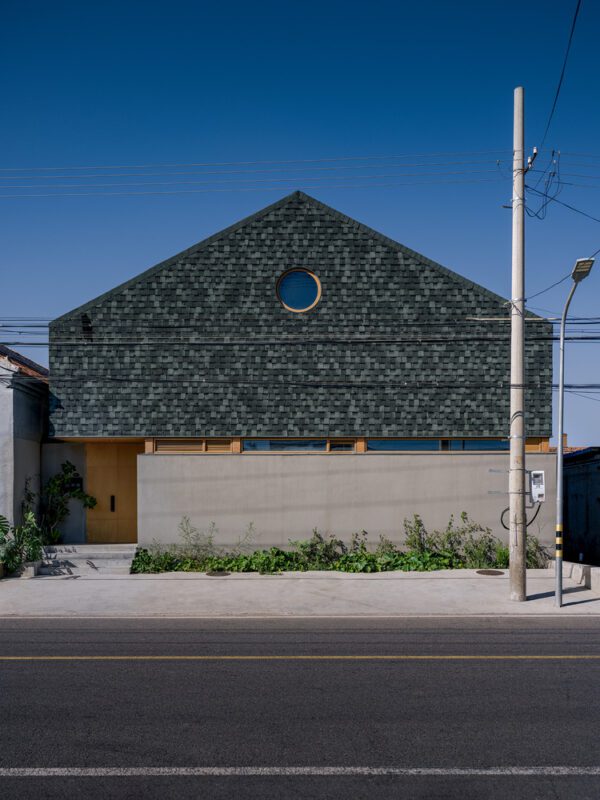
© Ning Wang
The positioning lies adjoining to the village’s most important highway on its japanese facet, spanning roughly 400 sq. meters. It’s a rectangular plot, longer from east to west and shorter from north to south. The unique buildings on the location had been slightly disorganized, comprising each pitched-roof and flat-roof brick-concrete constructions, together with some momentary buildings constructed with coloured metal roofs, none of which held preservation worth. Throughout the plot stand two persimmon timber and one walnut tree, planted by the home-owner’s father throughout his childhood. Nonetheless flourishing and fruitful, these timber have grow to be treasured household reminiscences. After discussions between the designers and the home-owner, all three timber had been preserved.
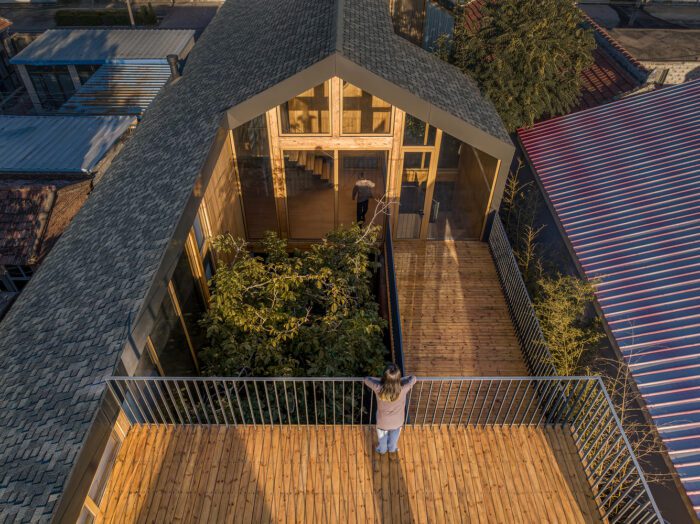
© Ning Wang
Wants and Constraints. The wealthy native pure assets, genuine rural life-style and proximity to scenic locations set up the homestay’s potential to enchantment to city guests. Positioned as a key node of the suburban tourism community, the venture seeks to convey the simplicity, serenity, and leisure of rural life. From the outset, the proprietor clearly outlined the meant use: the brand new constructing would function as a homestay, with a minimal of seven guestrooms, one among which might be reserved for his mom. The venture wanted to cater to each group retreats and particular person friends by incorporating Chinese language and Western-style kitchens, a eating room, a lounge, a recreation room, and a chess and card room for the aged. To fulfill these necessities, the brand new constructing needed to be roughly double the footprint of the unique constructions.
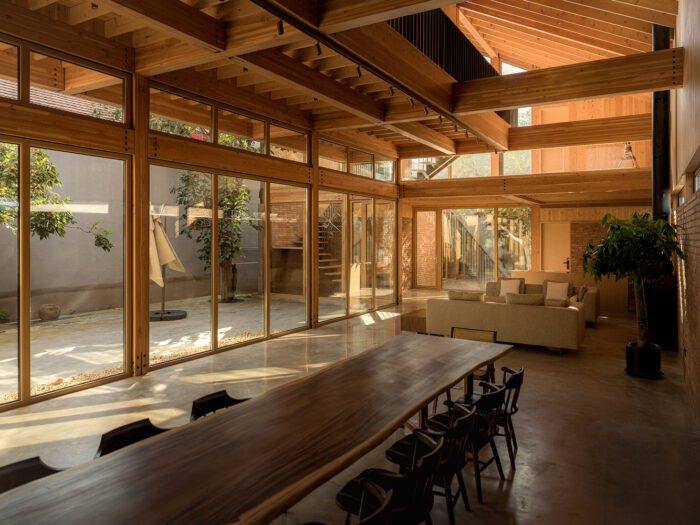
© Ning Wang
Native laws imposed extra constraints: a most eave peak of seven meters, a ridge peak restrict of 8.6 meters, and a minimal 40cm setback from neighboring buildings. Inside these limitations, the design needed to maximize usable quantity whereas creating vibrant inside areas that seize the allure of rural life.
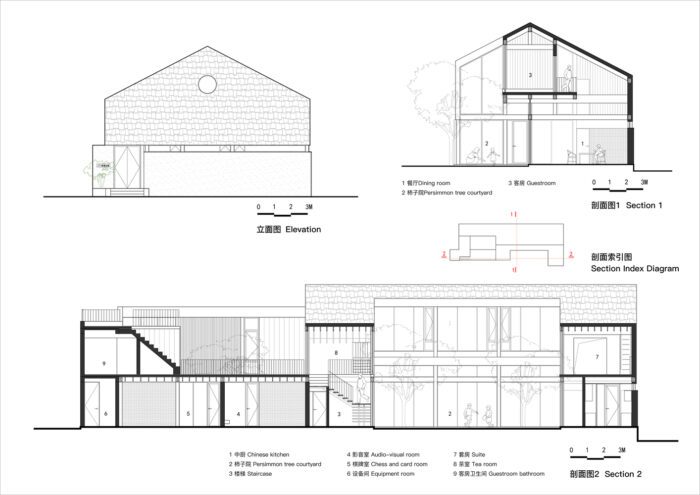
Part
Conceptualization and Formation. The three timber throughout the web site impressed the architectural design, and likewise the venture identify, “Lei Homestay.” The time period “Lei”(耒) originates from an historic agricultural software, representing rural agrarian life. Its written kind consists of three “wooden” (木) strokes, evoking the picture of timber and informing the architectural idea of an interwoven picket framework. The constructing is organized across the timber, forming two well-proportioned courtyards that herald ample daylight and views of seasonal adjustments. This structure continues the normal courtyard home typology of the village. The principle construction is crafted from glued laminated timber, which, beneath the double-pitched roof, helps a wide range of staggered platform areas, evoking the feeling of residing amidst a forest.
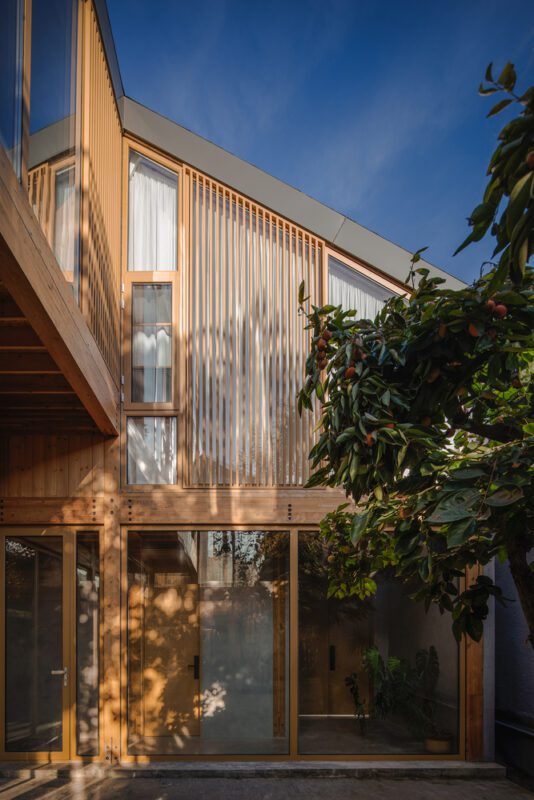
© Ning Wang
The bottom flooring is enclosed with stable partitions alongside the road for privateness, whereas the inside totally opens to the courtyards. It accommodates communal areas comparable to the lounge, eating room, and kitchen, in addition to the proprietor’s bed room bed room. On the second flooring, three staggered platforms seem to drift above the brick partitions, creating a visible interaction with the encompassing timber. This degree homes six guestrooms of assorted types, together with customary rooms, tatami-style single rooms, and loft-style household suites. The constructing options two rooftop terraces, providing panoramic views of the encompassing mountains.
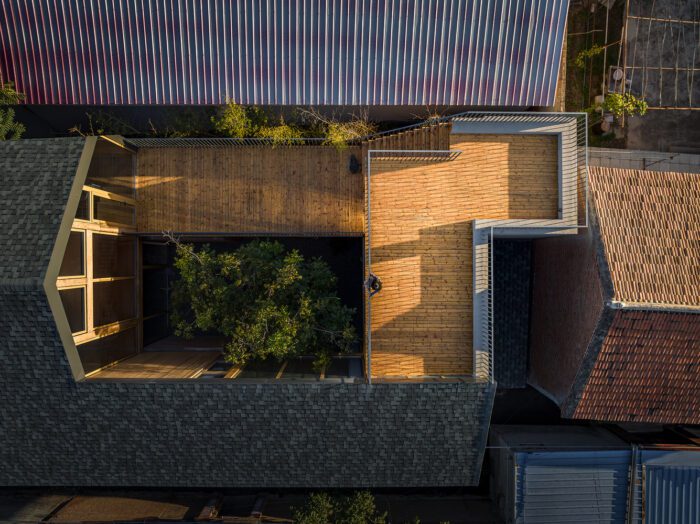
© Ning Wang
Supplies and Development. Sustainability and recyclability had been elementary rules in materials choice, with price management additionally being a key consideration. Timber, with its heat, pure texture and low-carbon footprint, was chosen as the first structural materials. Prefabricated timber building ensured precision through the constructing course of and assured high-quality execution. The outside partitions had been constructed completely from reclaimed bricks sourced on-site, embodying dedication to sustainable reuse. Inside picket partitions had been designed as part of the architectural system, avoiding the necessity for secondary outfitting and decreasing prices. Asphalt shingles lengthen from the roof to elements of the second-floor facade, creating the picture of a grey home floating above the perimeter partitions, enhancing the constructing’s distinct id.
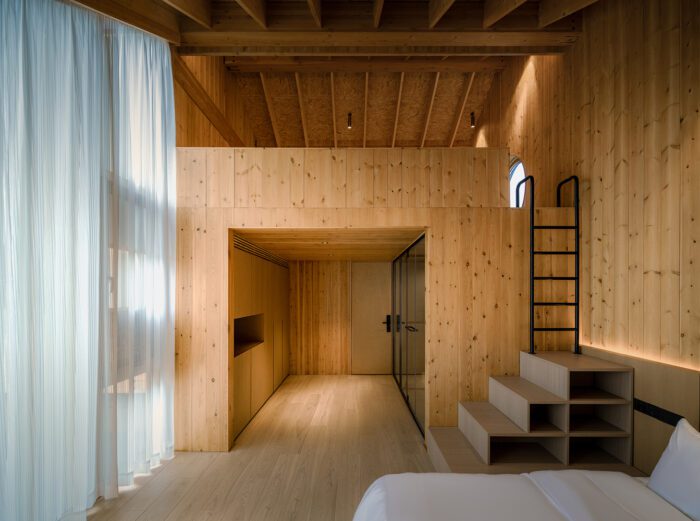
© Ning Wang
Upon its completion, the proprietor proudly described it as “a respiratory home.” Impressed by its atmosphere and crafted with sustainable supplies and considerate building strategies, the constructing cultivates a pure and serene life-style. Sooner or later, it’ll function each a industrial homestay and a public hub for neighborhood actions. Via fostering engagement between guests and native residents, the constructing is hoped to grow to be a catalyst for activating the normal village.
Mission Data:
- Nation: Beijing, China
- Space: 564 m²
- Yr: 2024
-
Chief Designers: Han Wenqiang, Li Xiaoming
-
Design Staff: Guo Jiangang, Lei Xin, Wang Yikai (Intern)
-
Structural Consulting: Beijing Xinnansen Wooden Construction Engineering Co., Ltd.
-
Mep Consulting: Zheng Baowei, Li Dongjie, Zhang Yingnan
-
Picture Modifying: Lei Xin, Wang Tonghui, Wang Hanfeng
-
Development Agency: Beijing Xinnansen Wooden Construction Engineering Co., Ltd.
